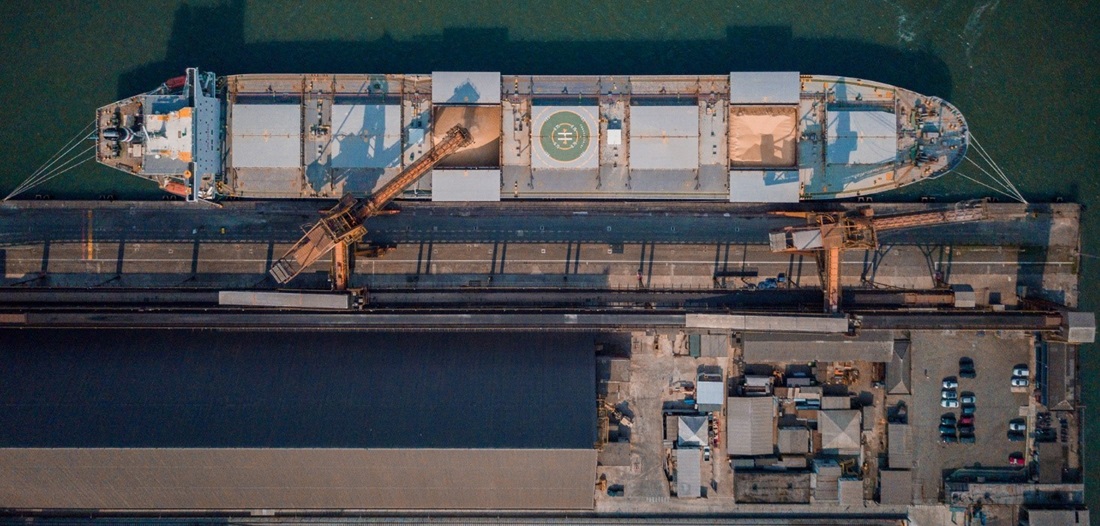
Port of Santos outranks Northern Arc in soybean, corn exports
Mar, 04, 2024 Posted by Gabriel MalheirosWeek 202410
Santos Port outpaced the Northern Arc (which includes the ports of Barcarena and Santarém in Pará, Itaqui in Maranhão, and Itacoatiara in Amazonas) in exports of soybean and corn in 2023. While the Santos complex exported R$ 61.8 million, ports above the 16th parallel shipped BRL 61.7 million. This small 100 thousand tonnes difference reveals a steadfast lack of planning in inland navigation. These figures come from the Brazilian Confederation of Agriculture and Livestock (CNA).
See below the export volume recorded at the ports of Santana and Itacoatiara, key Northern Arc terminals, from January and December 2023, according to the business intelligence platform DataLiner.
Cargo Exports | Santana and Itacoatiara | 2023 | WTMT
Source: DataLiner (click here to request a demo)
The Northern Arc had been the leader in soybean and corn exports since 2020. Elisangela Pereira Lopes, technical advisor to the National Commission for Logistics and Infrastructure at CNA, responsible for the study, stated that the Northern Arc was not prepared for El Niño and its impact on inland navigation in the Central-Northern region of the country, including drought.
However, Elisangela believes that climatic factors are not the primary cause of the decline in export volume. “There is a lack of strategic planning for the flow of Brazilian products. No plan accounts for the regular maintenance of the waterways. In Brazil, navigation occurs when rivers are deep; barge capacity gradually decreases during the dry season from September to November. Rivers resume flow in January when the rains return in full force.”
The logistics expert attributes the responsibility to the Ministry of Ports and Airports and oversight to the National Waterway Transport Agency (Antaq). “We don’t have a dredging plan or rock removal from rivers to ensure year-round navigation.”
However, Elisangela sees the General River Grant Plan (PGO in Portuguese), recently announced by Chief of Staff Rui Costa and Minister of Ports and Airports Silvio Costa Filho, as something positive.
The PGO proposes private concessions or right-of-use authorizations, with private contract holders responsible for maintenance services.
“The Madeira, Tapajós, Tocantins, and Mercosul rivers are already slated to enter the concession roster. The procedures are still under development, and the first public hearing on the Madeira and Mercosul rivers, the latter located in the Uruguay region, Rio Grande do Sul, and Lagoa Mirim, is scheduled for May this year.”
Regarding logistics, Elisangela explained that ports in the Northern Arc are more suited to export to Europe. In contrast, ports in the South and Southeast regions, including the Port of Santos, are ideal for Asia-bound routes. However, she emphasized that the choice of land routes from production centers to ports often overrides the destination of goods abroad.
Soybean and Corn Production
According to the survey conducted by CNA, Brazil yielded a combined total of 286.5 million tonnes of soybeans and corn in 2023, with 197.5 million tonnes harvested in the Northern Arc alone, comprising 68.9% of the national output. Of this production from areas north of the 16th parallel, a surplus of 94.3 million tonnes found its way to the Southeast and South regions, though not all of it was earmarked for export, as clarified by Elisangela.
In contrast, the region south of the 16th parallel contributed 89 million tonnes (31.1%) to the soybean and corn production, resulting in a total of 119.7 million tonnes exported through various ports such as Vitória (ES), Rio de Janeiro (RJ), Santos, Paranaguá (PR), São Francisco do Sul (SC), Imbituba (SC), and Rio Grande (RS).
Railways impact
Port consultant Ivam Jardim, from Porto Agency Consulting, underscores the competitive dynamic between Santos and the Northern Arc in soybean and corn exports. While the Northern Arc offers a geographically advantageous route for shipping Mato Grosso’s produce (thanks to its shorter distance), producers and trading companies grapple with infrastructure deficits and intricate logistical operations.
Jardim highlights that grains must traverse two modes of transport to reach the ships for export: road, primarily via BR-163, historically plagued with issues and now under concession and waterway, from Miritituba to Vila do Conde or another port capable of handling large vessels for these products export.
“In this stretch of waterway, if navigation is hindered due to meteorological conditions, transportation suffers. Furthermore, this segment still lacks terminal capacity in Miritituba, as well as an increase in the number of companies transporting barges.”
According to the consultant, the Port of Santos benefits from both road and rail connectivity to tap into Mato Grosso’s extensive production area. As the railway extends northward, each kilometer enhances the Port of Santos’ competitive edge in cargo absorption.
“Hence, for the Port of Santos and other ports below the 16th parallel, the construction of the railway linking Rondonópolis to Cuiabá and Lucas do Rio Verde will facilitate connecting the nation’s largest grain exporting market to the national rail network.”
The expert elaborates that Rumo’s operations only cover the southern region of Mato Grosso, starting from Rondonópolis. With Rumo’s planned expansions toward the state’s central-northern region, Mato Grosso will integrate into the national rail network via Rumo’s northern network.
“Nevertheless, Santos stands out as the port with the greatest capacity for exporting this product type, owing to significant investments made over the last decade.”
Source: A Tribuna
Click here to read the original news piece: https://www.atribuna.com.br/noticias/portomar/porto-de-santos-supera-arco-norte-em-volumes-de-soja-e-milho-embarcados-em-2023
-
Ports and Terminals
Mar, 10, 2020
0
Cabedelo Port registers 11.4% rise in cargo handled in February
-
Ports and Terminals
Jun, 28, 2024
0
Brazil gov’t launches program to streamline port concessions, private terminals approvals
-
Ports and Terminals
Aug, 18, 2020
0
ANTAQ data shows 4.4% growth in cargo handling in first semester
-
Ports and Terminals
Apr, 01, 2024
0
Paranaguá receives largest ship in terms of capacity in Paraná history

